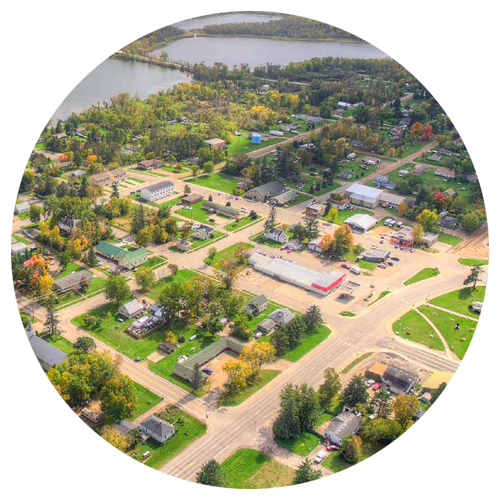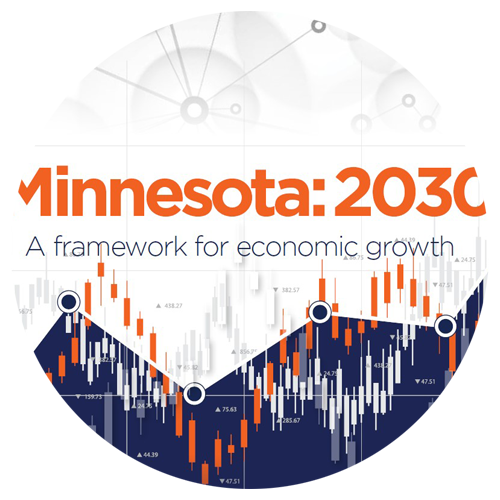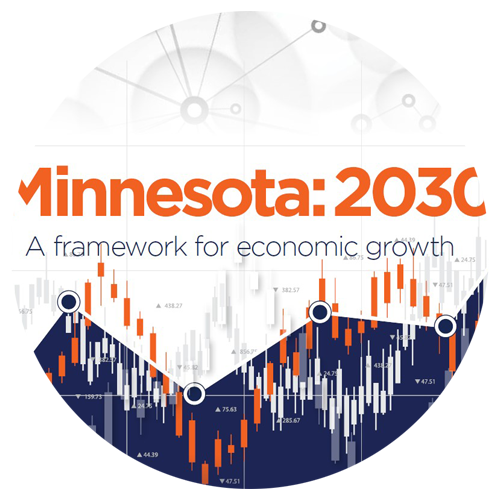2020 impacts
Minnesota: 2030
A framework for economic growth
The events of 2020 – most notably the COVID-19 pandemic – created shockwaves across the global economy. Minnesota experienced significant economic impacts amidst these circumstances, with employment and output declining at unprecedented rates in March and April before beginning a steep climb toward recovery in subsequent months. Minnesota also found itself at the center of a national reckoning with the killing of George Floyd and ensuing civil unrest.
Taken together, these events not only produced short-term challenges to overcome, but raised longer-term questions that must be thoughtfully addressed by businesses, policymakers and civil society. Some of these issues – such as remote working, talent mobility, commercial real estate activity in urban centers, and large-scale workforce inclusion efforts – could signal deeper shifts in Minnesota’s economy. As addressed later in this report, Minnesota must carefully assess changing trends and respond effectively if the state is to achieve its full potential this decade.
2020 economic performance and impact
Minnesota reported its first case of the novel coronavirus on March 6th. Within weeks, Minnesota went into a statewide lockdown, and by the end of April – a mere seven weeks after the first reported case – Minnesota had lost over 13 percent of its total employment and nearly 614,000 Minnesotans had filed claims for unemployment insurance, marking the steepest economic downturn in over 70 years.
Minnesota’s diverse economy and labor force strengths likely helped buffer some of the worst impacts of the downturn.
Unemployment peaked at 9.9 percent in May and fell to 4.4 percent by December, remaining well below national unemployment levels throughout the year.
Overall, Minnesota’s changes in employment and GDP reflect national trends. The state’s total employment declined slightly less than the U.S. in April, falling to 86.8 percent of pre-covid (January 2020) levels. However, after six consecutive months of job recovery, Minnesota’s employment ticked down in November and December, leaving the state at 91.5 percent of full strength and trailing the U.S. recovery. By the end of 2020, Minnesota still needed to add 246,100 jobs to recover to 2019 levels.
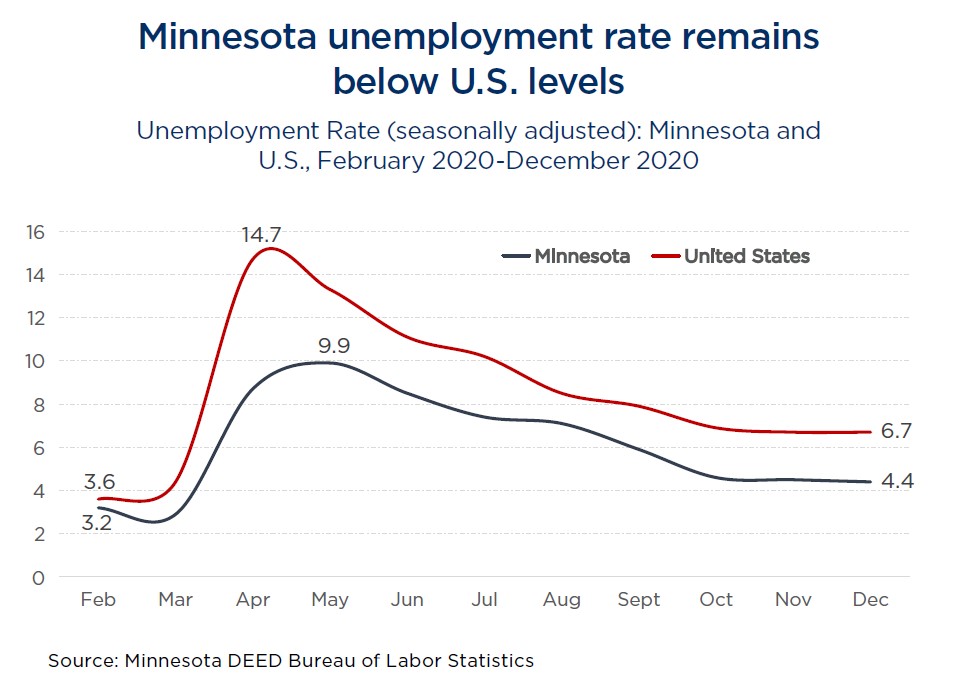
Uneven impact, uneven recovery
The COVID-19 recession impacted Minnesota’s economy broadly. However, losses were concentrated in certain industries and demographic groups. Local services, travel-oriented industries, young people and employees of color all experienced disproportionate impacts. Leisure and hospitality lost over half of its total jobs, with industries like full-service restaurants declining nearly 75 percent. Regions with greater shares of activity in these hard-hit industries were impacted significantly, such as Northeast Minnesota where unemployment peaked at nearly double the rate of the state’s Southwest region.
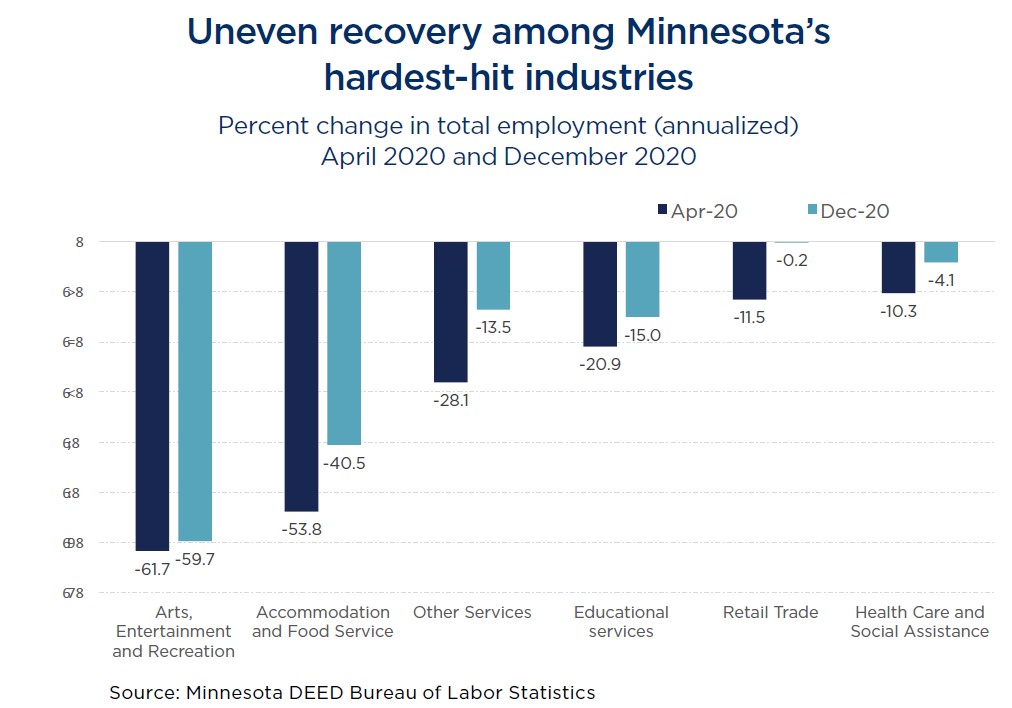
By the end of December, some of the impacts across sectors, regions, and demographics began to lessen. Regional unemployment levels, for instance, converged modestly by the end of the year with the gaps closing to less than two percentage points between the highest and lowest unemployment rates. Gaps in unemployment by race and ethnicity also closed considerably between May and December of 2020.
Other trends point in a more troubling direction. While the unemployment rate shrank for communities of color, some of that change is attributed to disproportionate declines in labor force participation. The number of women leaving the workforce over the last year is a particularly troubling trend. Additionally, though some hard-hit industries like retail, and health care and social assistance saw strong recovery in the second half of 2020, others like arts, entertainment, accommodation, and food service ended the year 40 to 60 percent below 2019 levels.
